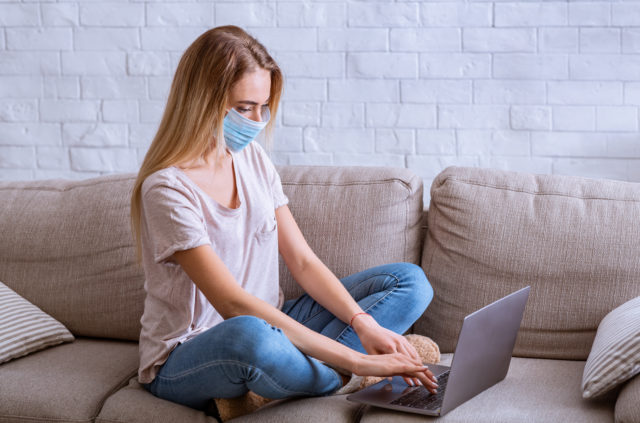
Working from home has spiked since the onset of the COVID-19 pandemic in March of 2020. This effort to reduce health risks may have limited the spread of the virus, but according to a new analysis by cybersecurity provider F-Secure, it may also have helped increase digital anxiety for those working remotely. The survey revealed that over 67% of internet users who work from home reported they increasingly worry about their online security and privacy even if nothing is wrong, compared to 58% of other users.
Senior Lecturer in Cyberpsychology at Nottingham Trent University Dr. Lee Hadlington, who’s research interests include employees’ adherence to workplace cybersecurity practices, said it makes sense that people’s sudden shift to telecommuting increased their anxieties about online threats.
“It is not surprising that individuals have started to worry more about cyber security, particularly when working from home. Many individuals were thrust into the ‘new normal’ of home working with very little preparation, training, or equipment. Let’s not forget, for most individuals in a workplace environment, cybersecurity is generally a second thought, and is usually something that is seen as the responsibility of someone else in the company. This, coupled with the fact that many home workers have less than perfect home working environments (e.g. desks in busy parts of the house, limited/poor internet connection, limited working knowledge of internet-based technology), means that these cyber security fears could be symptomatic of a combination of factors,” he said.
Also Read: How to Secure Your Home Wi-Fi Network
While worries about online security and privacy were prevalent among all survey respondents, remote workers reported elevated concerns about a myriad of issues, including:
- 65% of those who work from home said the internet is becoming a more dangerous place, compared to 54% of other respondents.
- 63% of remote workers said concerns about data privacy have changed how they use the internet, compared to 48% of other respondents.
- 71% of remote workers said they worry that new internet connected devices—such as wearables and connected home appliances—could lead to a violation of their privacy, compared to 64% of non-remote workers.
- 70% of remote workers felt increasingly uncomfortable connecting to public WiFi due to security risks compared to 63% of other respondents.
“Working from home could also have meant that individuals may have had more time to focus on other aspects of their working life and spent more time engaging in self-reflection and aspects of self-improvement; this could have included a re-assessment of cyber risks in their daily lives. The pandemic also meant people were isolated, with many turned to the one thing they did have access to – the Internet. Of course, spending more time engaged in one activity could lead to an increase in perceptions of risk, particularly when people are being subjected to negative news stories about cybersecurity related issues,” Dr. Hadlington explained.
According to F-Secure Security Consultant Tom Gaffney, managing security while working remotely takes technical security measures that protect data and devices, but also steps to keep people’s personal and professional lives separate.
“Steps everyone can take to secure themselves and their privacy when they work from home include updating their devices and software, ensuring their personal devices have security software installed, and some other basic infosec measures,” said Gaffney. “But keeping your personal and professional online activities separate from one another may be as important as any of these tips. Restricting what sort of things you do on each device and during which times can be an essential way to ease digital anxiety.”










